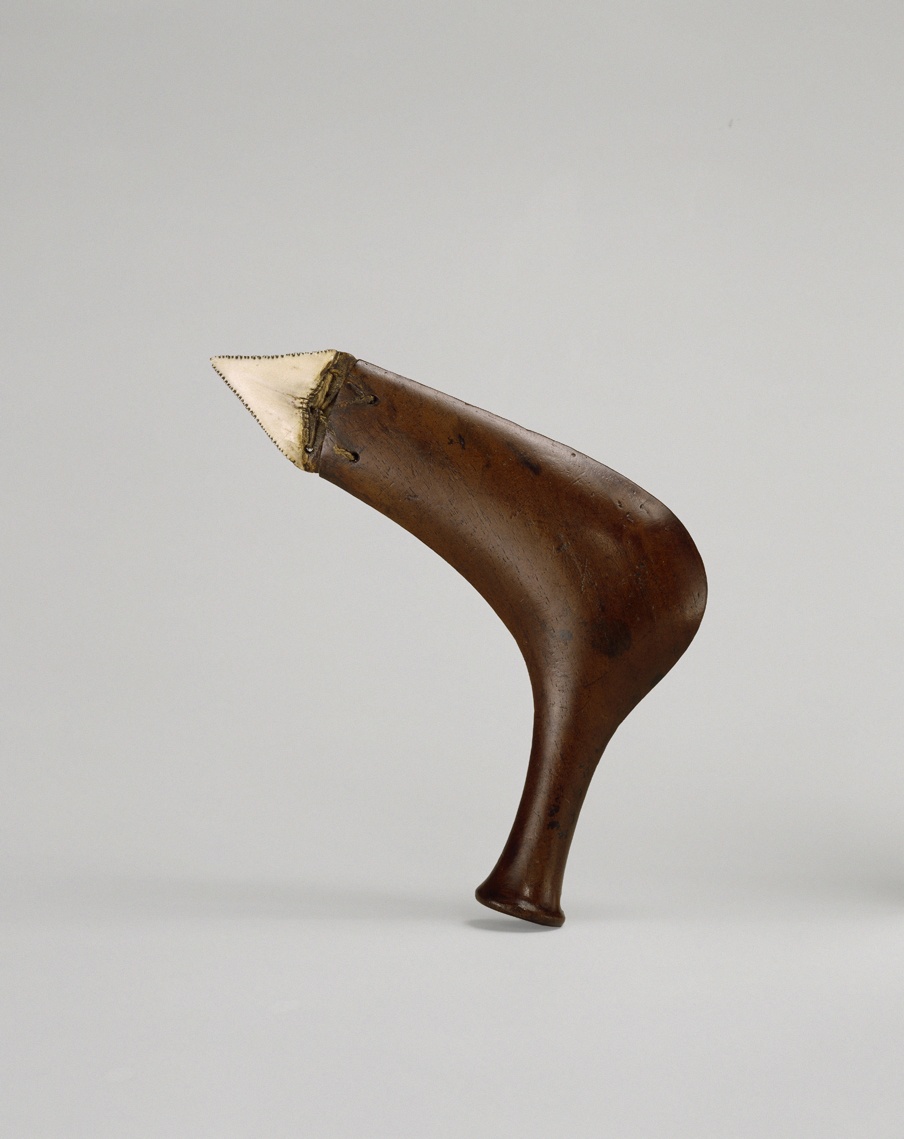
Wood and shark tooth
Greatest L: 17.2 cm
Hawaii
18th century
Ex collection:
Sir Ashton Lever ? [1]
Morris Pinto
The implement made of a hard wood, consists of a curved wood handle, the flattened section ending in a socket in which is inset a single shark tooth (niuhi, Carcharadon carcharias), attached by cross-lacing of a fine cord of olona (somewhat damaged) passing through two round holes in the handle and three in the tooth. The butt end of the handle pierced through the base and side for a wrist cord of olona.
Though various interpretations as to its use have been ascribed to this implement, such as weapon, scarifying knife, engraving tool and/or saw, we feel that the instrument is almost too fine and delicate to have been used as a war weapon. It could have served as a knife to cut open the stomach of a slain enemy as was the custom, or to slash someone's throat. It would seem adapted for delicate carving such as the engraving of a calabash or the grooving of a tapa beater. Some have suggested that the notches on the tooth could have been used as a saw, which may be so in view of their wear, but obviously for very delicate work only.
For comparable examples there is a specimen in Cook's collection [2] , one in Christchurch [3] , and one in Berne [4] brought back by John Webber [5].
Ethnography Glossary
1 In all likelihood part of the 1806 sale of the contents of Sir Ashton Lever's museum, when acquired with other items for a certain Richard Hall Clarke probably in the name of his agent using the pseudonym of R. Rowe. His descendants entrusted items from the Lever Museum to Bearne's of Torquay which were included in the sales of 1967 and 1971. This leiomano was acquired at one of these two sales, passed through several dealers' hands: Ralph Nash, Sandy Martin, Merton Simpson, the collector Morris Pinto, and lastly Lance Entwistle who gave it to the author.
2Hawkesworth's Atlas, no. 2, pl. 67.
3 Canterbury Museum E. 150.1208, ex W.O. Oldman collection no. 541: Oldman, W.O.: The Oldman Collection of Polynesian Artifacts (New Plymouth, 1943), p. 71, pl. 127.
4 Historical Museum HAW 4: Kaeppler, A.L.: Cook Voyage Artifacts in Leningrad, Berne, and Florence Museums, Bernice P. Bishop Museum Special Publications 66 (Honolulu, 1978) p. 61 fig. 117.
5 See footnote 3 previous entry, Dagger, cat. no. 276.